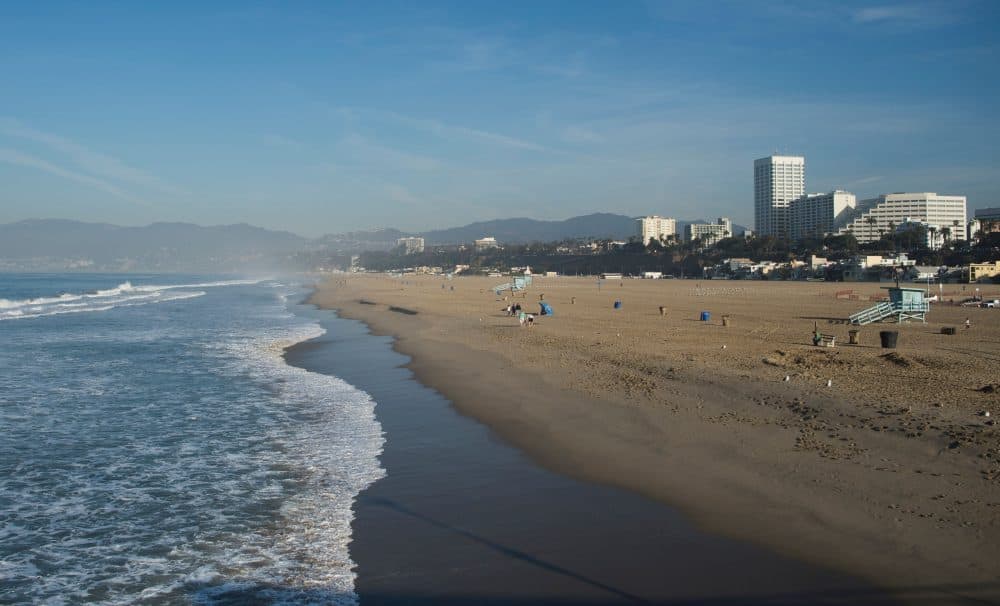Advertisement
Facing Challenges From Climate Change, What Will California's Beaches Look Like In 50 Years?
Resume
Here and Now's Jeremy Hobson recently hosted from California, for the Golden State's primary contest on Tuesday. During his trip, he visited a beach in Malibu, where he spoke with lawyer Maggie Hall, who works at the Environmental Defense Center, to discuss the challenges facing California's beaches.
Interview Highlights: Maggie Hall

Have threats to California's environment gotten better or worse over the last few decades?
Unfortunately, they've gotten worse and the threats are only increased. Oil and gas has long been an incredible threat to our coastline. We saw that most vividly in 1969 with the Santa Barbara oil spill, which in large part gave rise to the modern environmental movement. Unfortunately we saw another devastating example of that just over a year ago in Santa Barbara again when the Plains All American Pipeline ruptured and spewed over 140,000 gallons of crude oil off the coast and into our marine environment.
How much oil production is going on off the coast of California?
There are currently 22 federal platforms offshore California in the Pacific. 19 of those platforms are in the Santa Barbara Channel and they are currently operating. Recently we've seen increased practices of fracking and acidizing occurring right out in the ocean.
And this is being done legally?
In our opinion it's illegal, however the federal government is authorizing it. So the battle continues.
What about the issue of erosion? How much has that affected the beaches?
Well in California, we've actually lost of 90 percent of our coastal wetlands. So we've lost a lot of our natural buffers to things like sea level rise and continued development on our coastline is only adding to problems of erosion. We've seen efforts at beach armoring, such as rock revetments and seawalls and those have only caused the massive loss of beaches.
Are there regulations that stop people from building right up to the beaches or should their be more regulations on that score?
In California we actually have an incredibly strong law called The Coastal Act that authorizes the California Coastal Commission, which has really strong protections for the environment and public access to beaches. Right now the California Coastal Commission has put out a guidance to help plan for a sea level rise. To help cities and counties moving forward take into account sea level rise with their long term planning. So hopefully we will start to see smart long-term decision moving forward that account for sea level rise but unfortunately there have been mistakes in the past and over-development in the past and it's really hard to mitigate for certain ecological losses that we've already suffered.
What do you think this state's beaches are going to look like in 50 years if things keep going the way they are going?
Well, if things keep going the way they are going we're going to see more oil spills, we're going to see oil trains we're going to see no beaches if we keep building sea walls. We're going to lose what California is known for which is incredible beach towns, incredible environment, recreation, all of those resources are at risk and we need to protect them.
Guest
Maggie Hall, staff attorney at the Environmental Defense Center.
This segment aired on June 10, 2016.